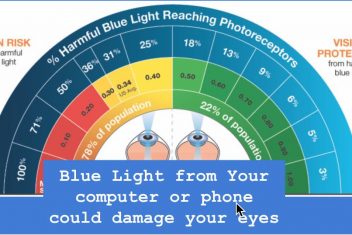Digital payment services are shaping the future of finance and commerce. The World Economic Forum (WEF) predicts that by 2027, 80% of payments will be digital. Established technologies have been enhanced, and new systems have been introduced to accommodate fully digital transactions. Understanding the market and trends and the underlying technologies will help you gain a competitive edge in this brand-new world. This blog post gives an overview of global digital payments.
What is digital payments?
Digital payments are electronic payment methods, either made after a transaction has been completed or as part of a transaction. This payment method allows buyers to make payments quickly and securely, removing the need for cash, checks, and credit cards. For businesses, they allow money to flow in real-time, reducing the time spent on reconciliation processes.
Advantages for buyers
They offer several advantages for buyers, including speed of processing, convenience, reduction of error rate, and minimal risks. The increased processing speed means less time spent on administrative tasks, allowing businesses to focus on core functions. Convenience is a strong consumer pull factor as it allows the consumer to pay how they want, when they want. This can be particularly useful when paying in person or using an electronic terminal at the point of sale (POS).
Read: How Digital Technology Can Benefit Your E-Commerce Business
Types of digital payments
The most well-known are the bank cards and mobile payments. Bankcards include debit cards, credit cards, and prepaid cards and are accepted at the POS. Mobile payment services allow users to make a purchase using their smart devices.
Digital payment methods
There are two methods of digital payment – cashless and cash enabled.
1. Cashless
Cashless payment methods include sewallets, pre-paid cards, digital wallets, mobile wallets, and mobile payment services. Consumers use sewallets to make payments. They are a digital alternative to the traditional wallet, typically used for cards, coins, and notes. The difference is that sewallets allow consumers to make purchases online or on any retail site using their smartphone as a card-reader.
They offer many advantages, including ease of use with quick transactions, and cashless transactions are quicker than traditional payment methods such as cheques.
Read: 6 Best Credit Card Processing Tools 2022
2. Cash Enabled
Cash-enabled payment methods include card payments and cashless debit (CDF) solutions. Card payments allow the consumer to pay for purchases on a POS terminal using a plastic card linked to their bank account. Cashless debit (CDF) services allow businesses to receive funds from consumers’ bank accounts in real-time, removing traditional checks or transfers. CDF solutions also help businesses better manage risk as they can monitor credit and debit transactions with minimal delays.
Who are the major players in digital payment?
The number of providers is growing quickly, both traditional banks and new entrants to the market. These include payment technology companies, mobile operators, point-of-sales companies, and card schemes. The traditional banks are developing and improving digital banking software and platforms to enable digital services here is the detailed guide to digital transformation in banking. The new entrants are fast improving and innovating existing products and services.
Companies that offer digital payments to consumers:
They include PayPal, Mastercard, Visa, American Express, Discover Card, and JCB cards. PayPal is leading the charge as it has the largest consumer base, while Mastercard offers the most widely accepted card payments.
Read: Top 10 Banking Trends for 2022
Digital payments technology
Telecommunication technology is used to transfer data from the sender to the receiver, with digital payment systems and technologies being considered at all payment stages. The use of SMS, USSD, e-commerce, and other electronic channels is considered in making payments. The information that carries this message includes:
- The sender’s name.
- Telephone number.
- Type of transaction (the value and amount).
- Recipient’s phone number.
- Information about companies that are financial institutions or are part of a payment system.
Read: What is blockchain and how does it work
Future of online payment technologies
New payment methods like virtual cards and e-wallets will make online payments faster and safer, and easier to access. It is predicted that by 2027, 80% of payments will be digital.
As a form of payment, virtual cards do not require a credit card, prepaid card, or debit card. It is now possible for customers to shop directly from the internet without the need for an offline payment method. Payment information can be received via SMS or USSD. In some countries, domestic cards can be used to make payments.
E-wallets are physical devices that store the private and financial information of the customer and allow them to make payments using a digital wallet. E-wallets are similar to cheques, but other people can’t see the account number or details of transactions. The benefits of e-wallets include multifold – they can be used long term, can be accessed from any internet-connected device, and are secure.
Digital payment solutions
There are many different kinds and services, with some of the more popular ones including:
1. Augmented reality
Virtual payment methods have enabled customers to make payments anywhere, increasing their productivity. Suppose a merchant makes the customer’s proximity to the merchant stall or counters visible on the mobile device using augmented reality (AR) technology. In that case, it is possible to make payments through contactless devices like smart cards or smartphones.
Read: How Artificial Intelligence Predicts Trading Market
2. Payment app
A payment app is a mobile app that can be used to make digital payments. These payment apps are available for different platforms and operating systems. Some of the major digital players in the payment app space include PayPal, Amazon Pay, Apple Pay, Samsung Pay, M-Pesa, and Google Wallet.
Conclusion
In conclusion, digital payment has become an extremely popular method of payment. This is due to the ease, speed, and security of being able to make online payments, as well as being able to pay offline. Improvements in technology have made cashless payment methods more accessible and advanced, with organizations like PayPal and Mastercard offering the quickest transfers and most convenient services.
The growth in mobile technology and the increased use of smartphones have led to an increase in mobile payments. The number of digital payment users is expected to soar as more and more people switch to a cashless, card-based, or cardless environment. This development will transform normal brick-and-mortar businesses while making it easier for customers to access items they want at a faster pace and lower price.
If you like the content, we would appreciate your support by buying us a coffee. Thank you so much for your visit and support.



